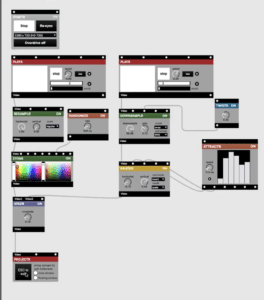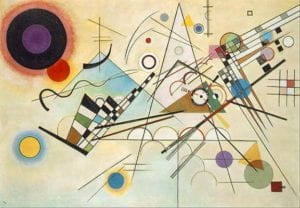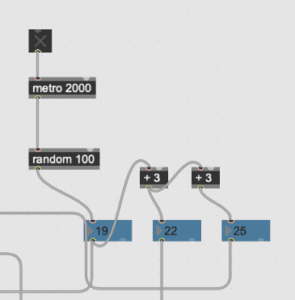Link to GitHub –
https://gist.github.com/HoiyanGuo/41ae8088198c4179d606cbfb8b3efc89
Experimenting with BEAP was such a frustrating but fun experience. For this week’s assignment, I made a second synthesizer in conjunction with the first provided one and attempted to mix the sounds from the two sequencers with some sort of sense. In the second synthesizer, I replaced most of the modules but still followed the structure of Oscillators – Mixer – Filters – Level Control – Effects. I connected two unfamiliar oscillators, FM and Wavetable, to an Audio Mixer, then ran it through the highpass filter under Classroom Filter. After adding the VCA level control and connecting it to the sequencer’s gate through an ADSR control, I added one Flanger effect before connecting to the final mixer then stereo output. The decision of each module was a result of experimenting with different modules under BEAP. As soon as I finished building the second synthesizer, I felt ready for my favorite part of the assignment – endless knobs twisting.
Since my knowledge for synthesizer is limited, I find it quite impossible to have an overall control of the generate sounds – I had to mute or bypass each module back and forth to understand how each thing was contributing to the output. I ended up with elusive traveling sounds and did my best to make the sounds from the two synthesizer fit with each other rhythmically (unfortunately not so much with pitch). As I wish to learn more about the connection between modules, specifically the use of envelops, I feel happy with the experimenting process which was indeed full of surprises and can’t wait to learn linking BEAP with Vizzie.


